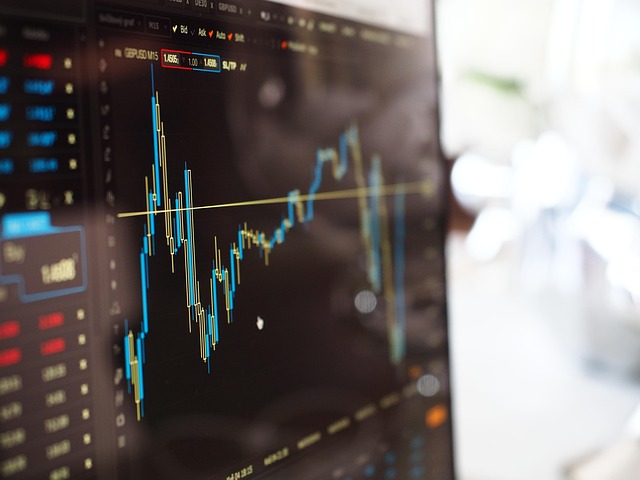Factors Driving Recycled Metal Values in International Markets
Recycled metal values fluctuate across international markets due to a mix of economic, technical, and regulatory factors. Traders, recyclers, and manufacturers monitor supply and demand, logistics, commodity indices, and sustainability incentives to assess scrap prices. Understanding these drivers helps stakeholders interpret short-term price moves and long-term valuation trends.

Recycled metals move through a complex global system where price signals reflect not only raw supply and demand but also processing costs, environmental rules, and international logistics. Market participants—from collection yards to end-users—follow commodity indices, regional demand trends, and analytics tools to value material streams accurately. This article outlines core factors that influence recycled metal values and provides a practical pricing comparison to illustrate current market patterns.
What affects metals valuation?
Valuation of recycled metals depends on composition and quality as well as external benchmarks. Grade and contamination levels determine how much processing is required and which downstream markets will accept the material. For example, clean copper or aluminum commands a premium relative to mixed or contaminated streams because less refining is needed. Local smelting capacity and the availability of certified assays or laboratory analytics also change realized value, as buyers will discount uncertain lots to cover testing and rejection risk.
How do market trends influence recycling?
Market trends such as manufacturing output, construction activity, and seasonal demand cycles drive recycling volumes and prices. When industrial activity expands, demand for reprocessed metal rises, tightening supply and raising prices. Conversely, slowdowns reduce demand and cause stockpiles to build, pressuring prices downward. Traders track macro indicators and sector-specific trends—auto production for steel and copper usage, or aerospace and packaging demand for aluminum—to anticipate changes in scrap uptake.
What role do commodities indices play?
Commodities indices and futures markets provide pricing references that influence scrap valuations. Benchmark prices for primary metals—such as copper, aluminum, and steel hot-rolled coil—set expectations for recycled equivalents. Scrap buyers often apply discounts or premiums relative to these indices based on quality and logistics. Where liquid futures exist, they offer hedging options that can stabilize quoted scrap prices, but many recycled material contracts remain cash-based and regionally negotiated.
How do supply and demand shape pricing?
Global supply and demand balance is a primary driver. On the supply side, collection rates, demolition schedules, and export flows matter. Policy measures—taxes, deposit schemes, and extended producer responsibility—can boost collection and increase supply. Demand is influenced by smelter capacity, import restrictions, and substitution between scrap and primary metal. Bottlenecks such as limited shredding capacity or constrained port throughput can create local price divergence even when global fundamentals appear balanced.
How do logistics, analytics, and sustainability affect value?
Logistics costs and chain reliability directly reduce net scrap prices: transport costs, port fees, and delays compress margins. Advanced analytics—material flow tracking, assay data, and market dashboards—helps traders reduce information asymmetry and secure better prices. Sustainability credentials increasingly affect valuation: certified recycled content, traceability, and compliance with environmental standards can unlock higher-value buyers, particularly in regions where corporate procurement policies favor low-carbon or certified feedstock.
Real-world cost and pricing insights
Price levels for recycled materials vary by grade, region, and timing. Below is a comparison of representative recycled metal product types and sample providers active in international trading. Cost estimations are presented as ranges to reflect variation across locations and grades. Use these as illustrative benchmarks rather than definitive quotes.
| Product/Service | Provider | Cost Estimation |
|---|---|---|
| Ferrous scrap (shredded steel per metric ton) | Sims Metal Management | US$150–350/ton |
| Clean aluminum (ingot-equivalent per metric ton) | European Metal Recycling (EMR) | US$1,500–2,500/ton |
| Copper scrap (refinery-grade per metric ton) | Schnitzer Steel / regional traders | US$6,000–9,000/ton |
| Mixed non-ferrous (sorted bales per metric ton) | MetalX / regional brokers | US$700–1,800/ton |
Prices, rates, or cost estimates mentioned in this article are based on the latest available information but may change over time. Independent research is advised before making financial decisions.
Conclusion
Recycled metal values in international markets are shaped by an interplay of material quality, macroeconomic trends, commodity indices, supply-and-demand balances, logistics, and sustainability considerations. Market participants who combine on-the-ground intelligence with analytic tools and an understanding of local processing constraints are better placed to interpret price movements. Given regional differences and frequent volatility, prices should be treated as indicative and verified through direct market quotes where decisions depend on precise valuation.






